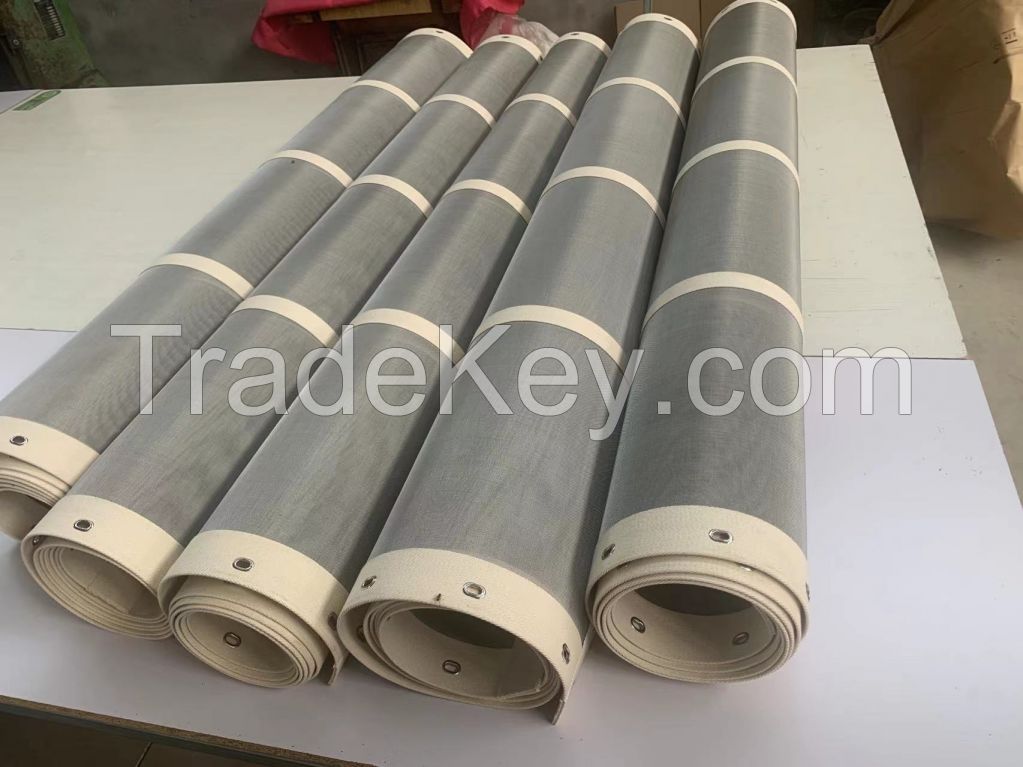





FOB Price
Get Latest Price25 ~ 98 USD / Roll
|10 Square Meter Minimum Order
Country:
China
Model No:
-
FOB Price:
25 ~ 98 USD / Roll Get Latest Price
Place of Origin:
China
Price for Minimum Order:
25 per Roll
Minimum Order Quantity:
10 Square Meter
Packaging Detail:
Wooden crate
Delivery Time:
3-30days
Supplying Ability:
168000 Square Meter per Year
Payment Type:
PayPal, Money Gram, Western Union, D/P, D/A, L/C, T/T
Product Group :
-
Contact Person Noah
Hengshui, Hebei
1. What material is used for the vibrating screen mesh? The
vibrating screen divides the material into different particle sizes
through the action of vibrating force. Screen materials are varied,
including stainless steel, polyurethane, polypropylene, nylon, and
fiberglass. Stainless steel mesh is suitable for scenarios that
require high wear resistance due to its high wear and corrosion
resistance. Polyurethane mesh has excellent elasticity and abrasion
resistance, making it suitable for environments where corrosion
protection is required. Polypropylene mesh has high strength and
abrasion resistance, and its price is relatively low. Nylon mesh
has high strength, abrasion resistance, and corrosion resistance,
but the price is relatively high. Fiberglass mesh is hard, strong,
wear-resistant, and relatively expensive. 2. Introduction to the
size of the vibrating screen mesh There are two sieve sizes for
vibrating screens: standard and non-standard. The standard size is
based on international standards and includes *0 specifications
including 0.**5 mm, 0.**5 mm, 0.*0 mm, 0.*5 mm, 0.*0 mm, 0.*5 mm,
0.*0 mm, 0.*0 mm, 0.*5 mm, 1.*0 mm, 1.*0 mm, 2.*0 mm, etc.
Non-standard sizes are customized according to the use environment,
and the aperture and shape vary, and often need to be customized
production. 3. The selection method of the aperture of the
vibrating screen The selection of the mesh size of the vibrating
screen needs to consider the material characteristics, composition,
particle size and screening requirements. 1. Material properties:
The viscosity, humidity and cohesiveness of the material affect the
selection of pore size. When choosing a high-viscosity material, a
larger sieve size should be chosen. 2. Material composition: The
specific gravity, particle size, and shape of the material affect
the choice of pore size. If you choose a large particle size heavy
material, you should choose a large sieve size; When choosing fine
materials, it is necessary to choose a small sieve size. 3. Sieving
requirements: Different mesh sizes affect the sieving effect. When
screening fine materials, choosing a smaller sieve size can improve
the screening accuracy; For coarse sieve materials, a larger sieve
size needs to be selected.
what:**6
**3
***8
***1
| Country: | China |
| Model No: | - |
| FOB Price: | 25 ~ 98 / Roll Get Latest Price |
| Place of Origin: | China |
| Price for Minimum Order: | 25 per Roll |
| Minimum Order Quantity: | 10 Square Meter |
| Packaging Detail: | Wooden crate |
| Delivery Time: | 3-30days |
| Supplying Ability: | 168000 Square Meter per Year |
| Payment Type: | PayPal, Money Gram, Western Union, D/P, D/A, L/C, T/T |
| Product Group : | - |